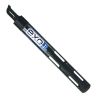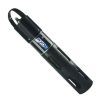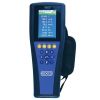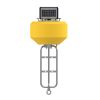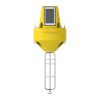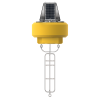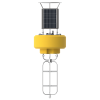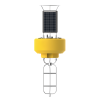YSI EXO2s Multi-Parameter Water Quality Sonde
Features
- Ideal for spot sampling or attachment to data buoys, AUV's, drones, etc.
- Smaller, lighter sondes can be deployed in tight spaces
- A more budget-friendly EXO without alkaline batteries
- Expedited repair and warranty service
- Lifetime technical support
- More
Overview
The YSI EXO2s represents an advanced sonde platform that offers a wide range of capabilities to those dedicated to monitoring natural aquatic environments such as oceans, estuaries, rivers, lakes, and groundwater. The YSI EXO2s is a compact, batteryless sonde that comes with the same capabilities as the EXO2, and is ideal for specialized applications where external power is supplied. With a highly efficient power management platform, robust construction, and a chemistry-free anti-fouling system, the YSI EXO2s allows accurate data collection for up to 90 days between service intervals.
Multi-Port Water Quality Sonde
The EXO2s sonde includes six sensor ports and a central anti-fouling wiper option. Sensor parameters include:
- Temperature
- Conductivity
- Depth
- Dissolved oxygen
- pH
- ORP
- Total algae (phycocyanin or phycoerythrin along with chlorophyll)
- Turbidity
- Fluorescent dissolved organic matter (fDOM)
- Rhodamine WT
- UV nitrate
- ISE ammonium
- ISE nitrate
- ISE chloride
Outputs Four Calculated Parameters.
- Salinity
- Specific conductance
- Total dissolved solids (TDS)
- Total suspended solids (TSS)
Onboard Signal Processing and Memory
All EXO sensors are digital sensors with onboard signal processing and memory. Built-in sensor diagnostic and calibration data allow users to calibrate multiple sensors in one sonde and distribute them to various other sondes in the field. Wet-mateable connectors allow for swaps in wet conditions, while active port monitoring automatically detects each sensor and verifies operation.
In The News
From Paddles to Phytoplankton: Studying Vermont’s Wildest Lakes
For six months of the year, Rachel Cray, a third-year PhD student at the Vermont Limnology Laboratory at the University of Vermont, lives between a microscope and her laptop, running data. For the other six months, she is hiking and canoeing four of Vermont’s lakes, collecting bi-weekly water samples. Cray studies algal phenology across four lakes in Vermont, US, that have low anthropogenic stress—or in other words, are very remote. Funded by the National Science Foundation Career Award to Dr. Mindy Morales, the lakes Cray researches part of the Vermont Sentinel Lakes Program, which studies 13 lakes in the area and, in turn, feeds into the Regional Monitoring Network, which operates in the Northeast and Midwest US.
Read MoreReimagining Water Filtration: How Monitoring and Science Enhance FloWater Filtration Systems
Over 50% of Americans think their tap water is unsafe , according to the Environmental Working Group (EWG). Other recent surveys have found that number to be as high as 70% of persons surveyed. Whether due to increased public awareness of water quality issues or confusion about how municipal water sources are regulated, there is a clear distrust of tap water in the United States. According to industry expert Rich Razgaitis, CEO and co-founder of the water purification company FloWater, this issue creates a damaging cycle. Razgaitis explained that the health and environmental problems associated with contaminated water aren’t the only issues. As people become increasingly aware that some tap water is unsafe, they resort to bottled water.
Read MoreMonitoring New Hampshire’s Aquatic Ecosystems: Continuous Data Collection in the Lamprey River Watershed
New Hampshire’s aquatic ecosystems provide a range of ecosystem services to the state and region. Resources and services like clean water, carbon storage, climate regulation, nutrient regulation, and opportunities for recreation all depend on New Hampshire’s aquatic ecosystems remaining healthy. Jody Potter, an analytical instrumentation scientist at the University of New Hampshire (UNH), is studying these aquatic ecosystems in hopes of developing an improved understanding of ecosystem services and their interactions with climate change, climate variability, and land use changes. [caption id="attachment_39799" align="alignnone" width="940"] Aquatic sensors in the Merrimack River in Bedford, NH, with I-293 in the background.
Read More

















































